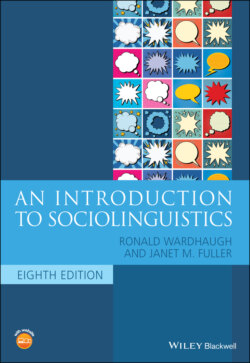Читать книгу An Introduction to Sociolinguistics - Ronald Wardhaugh, Janet M. Fuller - Страница 75
Language ideologies
ОглавлениеSociolinguists have increasingly been aware that how people feel about different ways of speaking, and how they evaluate particular linguistic features, plays a role in how they use language. Here we will review research on language ideologies, and in the next section we will discuss research on language attitudes. These two areas of study are generally distinguished in two ways: language attitude research looks at the ideas about specific varieties held by people from different sociolinguistic groups, while language ideology research looks at societal discourses and how they are reproduced in media as well as public and private speech. Language attitudes and ideologies clearly interact and influence each other, and the lines between them may become blurred. However, there are also methodological differences, with language ideology research focusing more exclusively on discourse analytic methods and traditional language attitude research employing methods which seek to elicit speakers’ views, often via surveys.
Errington (2000, 115) describes the study of language ideologies as ‘a rubric for dealing with ideas about language structure and use relative to social contexts.’ Particularly relevant here are ideologies which privilege certain ways of speaking as inherently ‘better’ than others. While there are many language ideologies (see Fuller 2019 for an overview), here we will introduce three commonly occurring language ideologies: the standard language ideology, the purist ideology, and the monoglot ideology.
